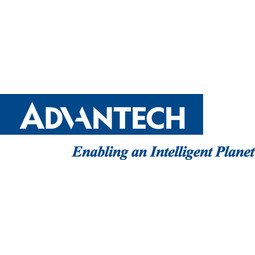下载PDF
Automatic Vision Inspection Solution for Product Traceability

技术
- 分析与建模 - 计算机视觉软件
- 处理器与边缘智能 - 嵌入式和边缘计算机
- 传感器 - 相机/视频系统
适用行业
- 食品与饮料
适用功能
- 质量保证
用例
- 视觉质量检测
挑战
随着市场对食品安全的需求越来越大,可追溯性越来越受到食品饮料行业以及包装行业的重视。
世界领先的饮料容器供应商之一需要一个系统来识别喷墨打印标签上的条形码和字母数字字符,其运行速度为 7 个单位,准确度至少为 99.9%。由于工厂里的工程师很少,客户希望为技术背景较低的工人实施一个可靠的系统,该系统具有易于使用的 GUI。
客户
未公开
关于客户
-
解决方案
研华提供了一个基于 PC 的自动光学识别系统,该系统带有多个摄像头,用于识别饮料容器上的条形码、数据代码和字符。
该系统包括一个 AIIS-3400P 4 通道 PoE 紧凑型视觉系统,配备 Intel® 第 6 代/第 7 代 Core i CPU;Inspector Express,一个 GUI 机器视觉应用程序,专为轻松设计和部署工厂车间的自动化检测而设计;和 QCAM-GM0640 0.3-MP 工业相机,带 PoE,安装和维护简单。
收集的数据
Supply Chain Optimization, Traceable Parts
运营影响
相关案例.

Case Study
The Kellogg Company
Kellogg keeps a close eye on its trade spend, analyzing large volumes of data and running complex simulations to predict which promotional activities will be the most effective. Kellogg needed to decrease the trade spend but its traditional relational database on premises could not keep up with the pace of demand.

Case Study
HEINEKEN Uses the Cloud to Reach 10.5 Million Consumers
For 2012 campaign, the Bond promotion, it planned to launch the campaign at the same time everywhere on the planet. That created unprecedented challenges for HEINEKEN—nowhere more so than in its technology operation. The primary digital content for the campaign was a 100-megabyte movie that had to play flawlessly for millions of viewers worldwide. After all, Bond never fails. No one was going to tolerate a technology failure that might bruise his brand.Previously, HEINEKEN had supported digital media at its outsourced datacenter. But that datacenter lacked the computing resources HEINEKEN needed, and building them—especially to support peak traffic that would total millions of simultaneous hits—would have been both time-consuming and expensive. Nor would it have provided the geographic reach that HEINEKEN needed to minimize latency worldwide.

Case Study
Energy Management System at Sugar Industry
The company wanted to use the information from the system to claim under the renewable energy certificate scheme. The benefit to the company under the renewable energy certificates is Rs 75 million a year. To enable the above, an end-to-end solution for load monitoring, consumption monitoring, online data monitoring, automatic meter data acquisition which can be exported to SAP and other applications is required.

Case Study
Coca Cola Swaziland Conco Case Study
Coco Cola Swaziland, South Africa would like to find a solution that would enable the following results: - Reduce energy consumption by 20% in one year. - Formulate a series of strategic initiatives that would enlist the commitment of corporate management and create employee awareness while helping meet departmental targets and investing in tools that assist with energy management. - Formulate a series of tactical initiatives that would optimize energy usage on the shop floor. These would include charging forklifts and running cold rooms only during off-peak periods, running the dust extractors only during working hours and basing lights and air-conditioning on someone’s presence. - Increase visibility into the factory and other processes. - Enable limited, non-intrusive control functions for certain processes.

Case Study
Temperature Monitoring for Restaurant Food Storage
When it came to implementing a solution, Mr. Nesbitt had an idea of what functionality that he wanted. Although not mandated by Health Canada, Mr. Nesbitt wanted to ensure quality control issues met the highest possible standards as part of his commitment to top-of-class food services. This wish list included an easy-to use temperature-monitoring system that could provide a visible display of the temperatures of all of his refrigerators and freezers, including historical information so that he could review the performance of his equipment. It also had to provide alert notification (but email alerts and SMS text message alerts) to alert key staff in the event that a cooling system was exceeding pre-set warning limits.

Case Study
Coca-Cola Refreshments, U.S.
Coca-Cola Refreshments owns and manages Coca-Cola branded refrigerators in retail establishments. Legacy systems were used to locate equipment information by logging onto multiple servers which took up to 8 hours to update information on 30-40 units. The company had no overall visibility into equipment status or maintenance history.





